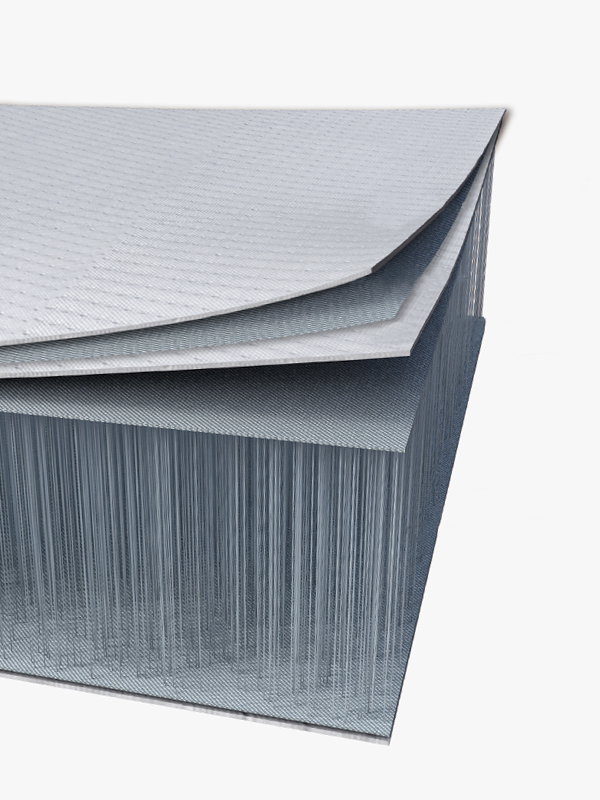In modern buildings, the choice of materials not only affects the aesthetics of the building, but also directly affects its functionality and sustainability. As a new type of building material, double wall fabrics are gradually becoming an ideal choice in modern buildings due to their excellent thermal insulation, sound insulation and environmental protection performance.
Double wall fabrics consist of two layers of fabric with an air barrier in the middle. This structure gives the material a series of unique properties, making it widely used in modern buildings.

The air barrier of double wall fabrics can effectively prevent the conduction of heat, especially in cold climates, which can keep the room warm and reduce the consumption of heating energy. Conversely, in hot summer, it can also block the external heat from entering the room and keep the space cool.
The air barrier not only performs well in thermal insulation, but also absorbs and attenuates the transmission of noise. This feature makes double wall fabrics particularly suitable for use in urban buildings, especially in noisy environments, such as buildings near traffic arteries or industrial areas.
Double wall fabrics are usually made of environmentally friendly materials, and their production process is relatively low-carbon and has little impact on the environment. In addition, due to its excellent thermal insulation performance, the use of this material can significantly reduce the energy consumption of buildings, thereby reducing the overall carbon footprint.
Double-wall fabrics are widely used in modern buildings. Here are some typical application scenarios:
Using double-wall fabrics in the exterior wall system can effectively improve the thermal insulation performance of the building and reduce energy loss. Especially in extreme climate conditions, double-wall fabrics can significantly improve the indoor living environment and improve energy efficiency.
For buildings that require a quiet environment, such as offices, hospitals or schools, double-wall fabrics are ideal sound insulation materials. It can effectively isolate indoor and outdoor noise and provide users with a quiet and comfortable environment.
Double-wall fabrics can also be used in door and window systems to further improve the overall thermal insulation and sound insulation of the building. This application not only improves the energy efficiency of the building, but also increases the comfort and safety of living.
When choosing double-wall fabrics, architects and designers need to comprehensively consider the functional requirements and environmental conditions of the building. In cold or hot climates, choosing double-wall fabrics with high thermal insulation performance can significantly improve the energy efficiency of the building. In noisy environments, materials with outstanding sound insulation performance should be given priority.
As environmental regulations become increasingly stringent, choosing double-wall fabrics with environmental certification not only meets policy requirements, but also meets the pursuit of sustainability in modern buildings.
Although the initial cost of double-wall fabrics may be high, its long-term energy-saving effects and low maintenance requirements make its total cost relatively low. Therefore, the long-term benefits of the material should be comprehensively considered when choosing.

 English
English русский
русский Français
Français Español
Español عربى
عربى







